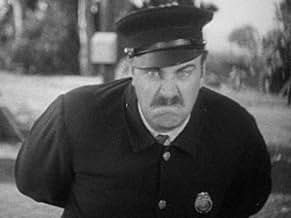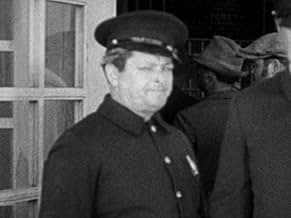अपनी भाषा में प्लॉट जोड़ेंSwept up in a police raid, Stan and Ollie are sentenced to jail and land in a jail labor camp. The governor visits, accompanied by two flappers, where the duo accidentally create rice puddin... सभी पढ़ेंSwept up in a police raid, Stan and Ollie are sentenced to jail and land in a jail labor camp. The governor visits, accompanied by two flappers, where the duo accidentally create rice pudding for a food fight.Swept up in a police raid, Stan and Ollie are sentenced to jail and land in a jail labor camp. The governor visits, accompanied by two flappers, where the duo accidentally create rice pudding for a food fight.
- Prisoner
- (बिना क्रेडिट के)
- Party Guest
- (बिना क्रेडिट के)
- Party Guest
- (बिना क्रेडिट के)
- Prisoner
- (बिना क्रेडिट के)
- Prisoner
- (बिना क्रेडिट के)
- Party Guest
- (बिना क्रेडिट के)
- Prisoner
- (बिना क्रेडिट के)
- Prisoner
- (बिना क्रेडिट के)
- Prisoner
- (बिना क्रेडिट के)
- Prisoner
- (बिना क्रेडिट के)
- Governor
- (बिना क्रेडिट के)
- Treetop Lookout
- (बिना क्रेडिट के)
- Prisoner
- (बिना क्रेडिट के)
- Prison Camp Officer
- (बिना क्रेडिट के)
- Party Guest
- (बिना क्रेडिट के)
- Prison Guard
- (बिना क्रेडिट के)
फ़ीचर्ड समीक्षाएं
It doesn't take the Boys long to turn a visit from governor Jimmy Finlayson into absolute chaos, with a mud fight that recalls the pie-fight finale from BATTLE OF THE CENTURY. This doesn't add anything new to the franchise. It's simply a typically brilliantly executed series of fun.
The IMDb trivia for this short claims the song played at the start of this picture is "Ain't She Sweet." It's actually "That's My Weakness Now."
Although a vast majority of Laurel and Hardy's previous efforts ranged from above average to very good ('45 Minutes from Hollywood' being the only misfire and mainly worth seeing as a curiosity piece and for historical interest, and even that wasn't a complete mess), 'Two Tars' for me was their first truly classic one with close to flawless execution. Didn't find 'The Hoose-Gow' as one of their best and a bit disappointing compared to their late 1928 and previous 1929 efforts, which were among their best and funniest early work. It is still good with a lot of great merits.
It may not be "new" material as such, some rather familiar material here and the first part takes a little bit too time to get going.
Compared to the late 1928 and previous 1929 output, it is a little on the subdued and bland side, contrary to the insane craziness and wacky slapstick that was properly starting to emerge.
When 'The Hoose-Gow' does get going, which it does do very quickly, it is good enough fun, not really hilarious but never less than amusing. It is never too silly, the energy is there and the sly wit is here, some of the material may not be new but how it's executed actually doesn't feel too familiar and it doesn't get repetitive.
Laurel and Hardy are on top form here, both are well used, both have material worthy of them and they're equal rather than one being funnier than the other (before Laurel tended to be funnier and more interesting than Hardy, who tended to be underused). Their chemistry feels like a partnership here too, before 'Two Tars' you were yearning for more scenes with them together but in 'The Hoose-Gow' we are far from robbed of that. Their comic timing is impeccable.
'The Hoose-Gow' looks mostly good visually (even if the polish is not always there), has energy and the direction gets the best out of the stars, is at ease with the material and doesn't let it get too busy or static. The supporting players are solid.
Overall, very good. Not essential or classic Laurel and Hardy but hardly disgraces them either. 7/10 Bethany Cox
This is one of the first times I've seen where slapstick really works for Laurel and Hardy. The Hoose-Gow doesn't make much of an effort to incorporate a lot of verbal wit, and instead, emphasizes the physical elements. For some reason, perhaps the result of a mood-change or an unconscious desire, I was pleased by the slapstick here, especially during the scenes when Hardy is attempting to cut down a tree and Laurel keeps getting in the way, nearly missing the sharp blade of the pickaxe. Scenes like that provide for slapstick that almost seems improvisational rather than a copout for screen writing.
One can tell, however, this is an early sound-short because of the lack of formal dialog. The Hoose-Gow could've really been a silent short and simply had the timely luxury of being able to be produced with sound. My only assumption to the lack of real conversation was writers at the time, in this case, H.M. Walker, who wrote most of Laurel and Hardy's short films, was just getting used to screen writing with audible dialog, making the early sound-shorts lack the kind of leisurely- paced dialog that would be present in Laurel and Hardy's later shorts. It's not a particular flaw, just a difficultly in adapting on part of the short's crew, but it would've made for a more witty short.
Yet The Hoose-Gow accomplishes a feat I never really thought possible with Laurel and Hardy shorts, which is make them more slapstick driven than dialog driven and have them turn out successful. For that, the film deserves a huge plus, and the fact that this is the most active I've seen both men in any project only adheres to their credibility has fantastic physical performers.
Starring: Stan Laurel and Oliver Hardy. Directed by: James Parrot.
Plot In a Nutshell: Two innocent bystanders (Stan Laurel, Oliver Hardy) are swept up in a police raid and sent to prison, where they wreak their usual havoc.
Why I rated it a '5': Overall this is not among L&H's best efforts. When you recycle multiple gags in a 20-minute film, it speaks to a lack of imagination and hints at churning just to get in their quota of 10 shorts a year. For those not aware, the 'loose-top-on-the-salt-shaker' bit was already used in "You're Darn Tootin'" and the 'soggy rice fight' was already used (in the form of pies) in "The Battle of the Century."
Perhaps if you have not seen either of those earlier shorts, "The Hoose-Gow" may seem fresh; but once you realize this, however, one can't help but be less than impressed with this effort. Add to this is the fact that the soggy rice fight isn't particularly hilarious and it just kind of falls flat. Hey, it's still Laurel and Hardy, so it's not a total loss. But in their entire catalog of work, "The Hoose-Gow" is decidedly run-of-the-mill.
5/10. Would I watch again (Y/N)?: Probably not. They did much better work elsewhere.
क्या आपको पता है
- ट्रिवियाOliver Hardy was injured during the filming of the scene in which Stan Laurel keeps nicking him with a pickaxe. A rubber pickaxe was originally to have been used for the scene, but it was decided that it looked too fake, in action, so a real one was substituted. Hardy moved a little too close to Laurel during the latter's backswing and received a very real cut from the pickaxe on his rear.
- गूफ़At the end of the film the car backs into the truck, just before the impact two barrels of whitewash tip over.
- भाव
Title Card: Neither Mr. Laurel nor Mr. Hardy had any thoughts of doing wrong - As a matter of fact, they had no thoughts of any kind
- इसके अलावा अन्य वर्जनThere is also a colorized version.
- कनेक्शनFeatured in The Crazy World of Laurel and Hardy (1966)
टॉप पसंद
विवरण
- रिलीज़ की तारीख़
- कंट्री ऑफ़ ओरिजिन
- आधिकारिक साइट
- भाषा
- इस रूप में भी जाना जाता है
- En la prisión
- फ़िल्माने की जगहें
- उत्पादन कंपनी
- IMDbPro पर और कंपनी क्रेडिट देखें
- चलने की अवधि21 मिनट
- रंग
- ध्वनि मिश्रण



































